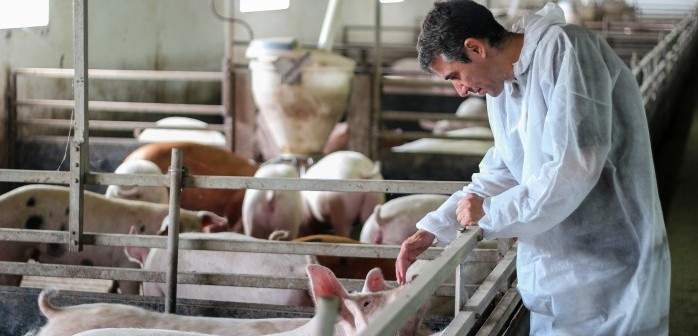The Pig Health and Welfare Council (PHWC) has identified industry partnership and improved disease surveillance as among the keys to maintaining and improving the health of the national pig herd.
The PHWC unveiled its latest biennial report, outlining the council’s achievements and setting out its priorities, at the Great Yorkshire Show on Tuesday afternoon. Launching the report, PHWC chair Dr Jane Downes set out the strategy for developing the new 20:30 vision for pig health and welfare.
The report notes how council has helped the industry prepare for potential disease outbreaks, including holding workshops. These included Exercise Trent, a disease simulation exercise go test the contingency plan for dealing with an outbreak of Porcine Epidemic Diarrhoea virus (PEDv), implemented primarily by AHDB) with support from the Animal and Plant Health Agency (APHA).
Other programmes of work have focused on topics such as African swine fever, LA-MRSA and hepatitis E, and the council has also had a wider involvement in the tail-biting action group and Defra’s revised code of practice for pig welfare.
Dr Downes emphasised that without healthy pigs and safe pork products, we have no commodity to trade.
The group has also continued to support the industry to reduce antibiotic use, which fell by a further 16% to 110 mg/PCU in 2018.
To achieve its vision of securing a safe, sustainable and profitable industry, PHWC has identified six themes, which the wider industry is being consulted on. These are:
- Partnership working with those in the pig industry and other farm animal sectors
- Maintain and extend disease surveillance
- Reduce, control or eliminate endemic disease, including those with food safety implications, with the aim of reducing the need for the use of antibiotics
- Use of data and new technologies
- Provide evidence that all production systems provide for physical and mental wellbeing
- Promote professional skills
The PHWC biennial report is available here
Dr Downes said: “In future, we will need to think about the bigger picture in any recommendations for change, the impact on the environment, air quality, water quality and waste management and, to this end, we will be inviting such experts to join the PHWC.”
“We will be working with the pig industry to update the 20:20 vision to take the industry forward to 2030. We aim to secure a sustainable and profitable industry which has the ability to invest in new technologies, disease-control measures and high welfare standards in all production systems, meeting the requirements of both present customers and new markets.”
Dr Downes thanked all those who have given their time to contribute to the PHWC, and said: “The support from across the chain demonstrates that the PHWC’s contribution to health and welfare is acknowledge and appreciated by those in industry and those in government.”




